Case Study
AUTHORISED PARTNERS

COMPANY
LEGAL
ADDITIONAL
HELP
Case Study
The mission entails conducting a hydrographic survey of the lake situated at Karkarook Park, covering an area of approximately 400 x 400 meters. There is a strict 1-day window allocated for the survey. Additionally, due to being within controlled airspace, the use of drones is prohibited. Two field teams were deployed, with one team tasked with conducting the hydrographic survey within the lake, while the other team performing terrestrial scans along the lake’s perimeter.
The Hydrographic Survey Team was equipped with the Seafloor HyDrone ASV vessel fitted with ANP (AutoNAV Plus G2) autopilot and Seafloor HydroLite DFX Plus Dual Frequency echo sounder.
ANP’s onboard PC had Trimble Access installed, allowing storage of survey data directly onboard the vessel, eliminating the need for external survey controller.
ANP’s Long Range Wi-Fi bridge and 4G LTE modem provided remote connection from shore into the vessel’s on-board PC, enabling the survey team to monitor and control all aspects of data acquisition in real time. Positioning to the vessel was provided by a Trimble R12 GNSS receiver connected to Trimble VRSNow correction service.
The Hydrographic Survey Team also had a Seafloor TriDrone RCV vessel equipped with a Seafloor HydroLite Plus Single Frequency echo sounder at their disposal.
Positioning to the TriDrone was provided by a Trimble R780 GNSS receiver connected to Trimble VRSNow via 4G LTE, while the bathymetric survey was controlled by Trimble Access running on a Trimble TDC6 controller stowed away in the main pontoon payload bay.
For bulk data collection of the lake perimeter features, the Terrestrial Scanning Team primarily used Trimble X12 scanner given its speed, range, and ease of use.
The team also deployed a Trimble R780 GNSS receiver and Trimble SX12 Scanning Total Station and utilised Integrated Survey workflow to tie in the hydrographic data and terrestrial survey data.
The Hydrographic survey team assembled the HyDrone ASV at the office but planned the autonomous survey mission on site.
Mission Planner software residing on AutoNAV Plus G2 was used to define the survey area perimeter covering the lake, define run line spacing and execute the automated survey.
To avoid beaching the vessel in the shallows or having it tangled in the reeds, the team ensured that the end-points of the run lines did not to get too close to the edge of the lake.
Onboard the HyDrone ASV, the Trimble R12 GNSS, corrected by Trimble VRSNow via 4G LTE modem, provided ANP autopilot with navigational data via serial NMEA stream and positioning for the depth soundings of Hydrolite-PLUS DFX transducer via Bluetooth connection.
Trimble Access residing on the ANP onboard PC synchronised and recorded GNSS positioning and depth sounding in a single job. Distance based continuous topo survey method was used to ensure even spacing of the soundings along the run lines.
With the mission planned, the HyDrone ASV was launched and navigated to the autonomous mission start point at the centre of the lake.
While the vessel was tramming to the mission starting point, we monitored the depth sounding echogram and fine-tuned Range, Gain and Deadzone settings on the HydroLite PLUS DFX echo sounder to ensure best performance in the Karkarook lake environment.
Upon reaching the mission starting point, the vessel entered “loiter mode” staying in position until given go-ahead to start with the survey.
Due to time constraints, we also deployed a TriDrone RCV and manually navigated it through the shallow waters around the perimeter of the lake, covering the areas between where the automated mission run lines ended and the shoreline. Had the time not been of the essence, this “infill survey” could have been done by manually operating the HyDrone ASV following the completion of the automated survey.
Trimble SX12’s range and ability to operate as a conventional total station and a scanner was used to tie the Trimble X12 terrestrial scan data to the hydrographic data.
Using an R780GNSS receiver, two control points on opposite sides of the lake were established and used for resection set-up of the SX12 Scanning Total Station.
The SX12 performed two full dome scans on either side of the lake, producing fully registered and georeferenced point clouds that were used as anchor points for the rest of the uncoordinated scans from the Trimble X12 3D scanner.
Trimble Perspectives field software was used to visualise the Trimble X12 data capture and automatically registered point clouds collected around the lake’s shoreline.
This provided real time insight into coverage from each scan station; identifying any gaps in the survey data and allowing the scanning team to infill where needed.
Back at the office, the data was downloaded and imported into Trimble Business Center:
Trimble Business Center seamlessly integrated and consolidated GNSS observations, Optical Measurements, 3D Scans and Depth Soundings onto one project datum.
From the combined data set, the edge of the lake was easily distinguished from the scan data and a surface was created to map the depths of the lake relative to the edge.
The resultant data set was then uploaded into the Cintoo cloud platform to be shared and visualised online in a web browser.
From the combined data set, the edge of the lake was easily distinguished from the scan data and a surface was created to map the depths of the lake relative to the edge.
The resultant data set was then uploaded into the Cintoo cloud platform to be shared and visualised online in a web browser.
The same data set was also uploaded to Trimble Stratus platform, for visualisation, reporting and tracking of historical readings throughout the project.